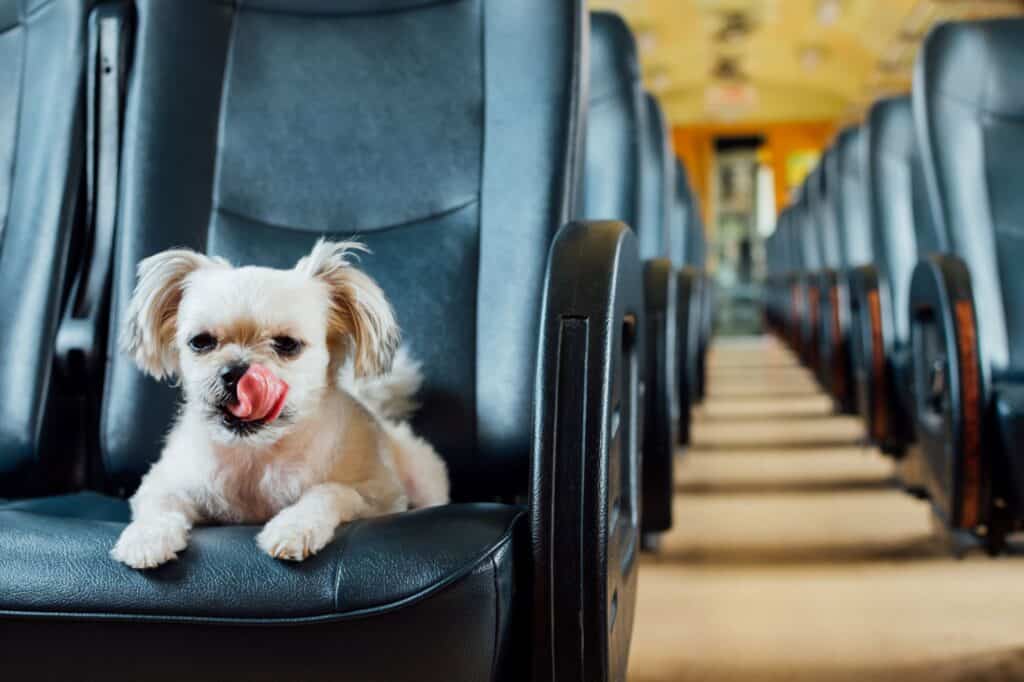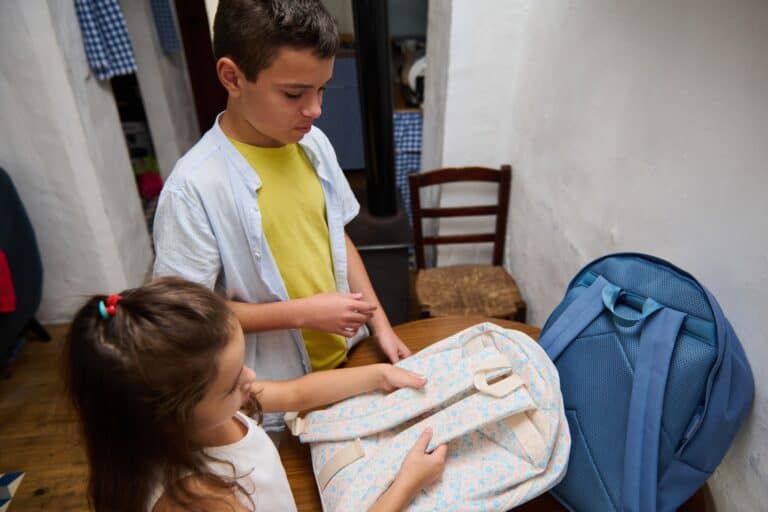Moving house with pets can be challenging. Managing pet transportation when moving house involves planning and preparation to keep them safe and comfortable. This guide offers practical tips to make the transition smooth and stress-free for your pets.
Key Takeaways
- Early planning and familiarisation with pet carriers is crucial for reducing pet stress during the move, along with updating microchip information and visiting the vet for health checks.
- Selecting an appropriate pet carrier that ensures comfort, ventilation, and security is essential for safe pet transportation, and varies based on pet size and type.
- On moving day, prepare a designated comfortable room with familiar items for pets, and follow safety measures for transportation, such as securing pets in carriers and providing regular breaks for dogs during longer journeys.
Understanding Pet Anxiety During a Move
Moving can cause significant stress and anxiety for pets due to their heightened sensitivity to changes and their owner’s emotions. Thorough planning and early decision-making are essential to ensure a stress-free experience for both pets and owners during the moving process. This guide is dedicated to making moving house with pets as smooth as possible, providing key strategies to alleviate pet anxiety and ensure their well-being.
From visiting the vet to assess health and suitability for travel, to familiarising pets with carriers, every step you take in advance can significantly reduce stress during the move. This guide will walk you through every phase of the moving process, offering practical tips and advice to make the transition smooth for your pets.
Preparing Pets for the Move
Early planning and decision-making are crucial for ensuring a stress-free move for both pets and their owners. Begin by familiarising your pets with their carriers well in advance of moving day. This can be achieved by placing the carriers in familiar rooms and encouraging your pets to explore them. For dogs, use a fitted dog guard in the car to ensure their safety. For cats, keeping them indoors during the packing phase can help them feel more secure.
Updating microchip details is another critical step. Ensure that your pet’s microchip information is up-to-date with your new address and contact details. This is especially important if your pet gets lost during the transition. Visiting the vet for a health check-up and necessary vaccinations can help prevent any health issues during the move.
Each type of pet requires unique preparation and care during a move to minimise stress and ensure their safety. Whether you have dogs, cats, or small mammals, understanding their specific needs can make the moving process smoother and more comfortable for them.
Choosing the Right Pet Carrier
Selecting the right pet carrier is paramount for pet transportation. The carrier should have the following features:
- Spacious enough for your pet to stand, turn around, and lie down comfortably
- A secure locking system to ensure your pet’s safety during transport
- A waterproof bottom for added comfort
- Adequate ventilation, ideally with mesh sides or windows for maximum airflow
For durability and ease of cleaning, carriers made from materials like canvas, nylon, and polyester are recommended. Soft-sided carriers are lightweight and portable, making them suitable for small to medium-sized pets. For larger pets or those that chew, hard-sided carriers made from plastic or metal are ideal.
For longer journeys, consider using rolling carriers equipped with wheels for heavy pets. Wearable carriers, designed for small pets, keep them close to the owner’s body, providing additional comfort and security. Choosing the right pet carrier is crucial for ensuring your pet’s comfort and safety during the move, contributing to a smoother transition.
Moving Day Essentials for Pets
On moving day, here are some tips to help minimise your pet’s stress:
- Have a designated, comfortable room for your pets.
- Pack food that your pet normally eats to avoid digestive issues.
- Bring plenty of water along with extra bowls to cater for any spills.
- Bring familiar toys to keep your pet occupied and provide comfort during the move.
If your pet requires medication, make sure to include it in your moving day essentials …
Ensure you have plastic bags and wet wipes for any accidents, as well as grooming supplies for any unexpected messes. If your pet requires medication, make sure to include it in your moving day essentials, especially if they suffer from motion sickness. Having these items on hand will help maintain your pet’s comfort and ensure a stress-free moving experience for everyone.
Transporting Your Pet Safely
Transporting pets safely during a move requires careful planning. For dogs, here are some tips to ensure a safe journey:
- Feed them before leaving
- Use a dog cage if possible
- Secure them with a seatbelt or fitted dog guard
- Never transport a dog loose in the boot, front footwell, or in a removal van
- For long journeys, stop periodically to offer the dog water and allow them to stretch their legs
It is essential to place cats in a secure travel carrier to ensure their safety and comfort during transportation. This will help reduce their anxiety and provide them with a safe space to rest. On hot days, ensure the car is well-ventilated and never leave your pet inside a hot car during stops. Following these tips will ensure that your pets are transported safely and comfortably.
Reducing Stress During Transit
Maintaining normality and routine can significantly reduce a dog’s anxiety levels during a move. Here are some tips to help keep your pets calm during the process:
- Use plug-in diffusers or pheromone collars for dogs at least 24 hours before starting any changes, including packing.
- Bring familiar items like food, litter, and bowls for cats to reduce stress.
- Provide a stuffed kong or chew toy to keep your dog occupied during the move.
These strategies can help minimise stress and make the transition smoother for your pets.
TIP
Regular bathroom breaks, with three to five per day, should be scheduled to allow dogs to stretch their legs and relieve themselves. These measures will help create a more stress-free moving experience for your pets.
Settling Pets into the New Home
Once you arrive at your new house in Finchley, settling your pets into their new environment is crucial. Start by setting up a designated area for your pets with familiar items like their bed, toys, and food bowls. This will help them feel secure and provide a sense of continuity. Unpack a room for your cat and use pheromone spray to help them adjust.
Limit your pet’s roaming area initially to help them adjust to the new environment gradually. For dogs, maintaining a routine for feeding and exercise is essential to facilitate a smoother transition. Gradually expand the accessible area for cats as they grow more confident.
Creating a calm environment and using specialist pheromones or calming plug-in diffusers can aid in reducing stress for pets in a new home. Be patient with indoor accidents during the initial adjustment period and maintain familiar scents in the habitats of small mammals and birds to help them feel secure.
Special Considerations for Different Pets

Each type of pet has unique needs and considerations that must be addressed during a move to ensure their comfort and safety. This section will offer tailored advice for:
- Cats
- Dogs
- Small mammals
- Birds
- Fish
This will help pet owners cater to the specific requirements of their beloved companions, treating them as valued family members.
Cats
Keeping cats indoors initially, typically for around six weeks, can help them get used to their new home. Allocating a specific room for them in both the old and new house can provide a sense of security, especially if it’s the same room in each house.
Using pheromone diffusers can help keep cats calm during the packing and moving process.
Dogs
Unpacking your dog’s bedding, food, water, and toys first can help them settle into the new home more quickly. Maintaining a consistent routine for walks, meals, and rest times is crucial to providing a sense of security for dogs.
Allowing the dog to explore their new surroundings, including the old house, at their own pace can help them adjust more smoothly.
Small Mammals and Birds
For small mammals like rabbits, invest in a high-quality carrying case and ensure the car remains cool during transit.
Maintaining the stability of small mammals’ and birds’ habitats is crucial during a move to reduce stress.
Fish
Transport fish in bags filled with water from their fish tank to minimise stress during the move.
Set up the new tank as quickly as possible upon arrival to ensure a smooth transition for the fish.
Finding a Pet-Friendly Removal Company
Finding a pet-friendly removal company when moving house is crucial to ensure your pet’s needs are understood and prioritised. Look for a removal company with experience working with families that have pets, as a significant portion of households include them. Ask the removal company if they are comfortable and experienced in transporting pets.
Check for testimonials and accreditations like those from the British Association of Removers (BAR) when selecting a removal company. Ask friends, family, and colleagues for recommendations to find a reliable pet-friendly removal company. Be sure to notify the removal company in advance about moving your pet. This will help ensure a smooth transition for your furry friend.
Moving Long Distance or Abroad with Pets

When moving long distances or abroad with pets, preparation is key. Here are some important steps to take:
- Microchip your pet and make sure the information is up to date.
- Ensure your pet is up to date on all necessary vaccinations, including rabies.
- Obtain a pet passport or an animal health certificate, depending on the requirements of the destination country.
- Make sure you have an airline-approved carrier that fits under the seat, with secure locking and full ventilation.
By following these steps, you can ensure a smooth and safe journey for your pet.
For countries like Australia and New Zealand, specific requirements include rabies vaccinations well in advance and quarantine periods. The cost of shipping a pet internationally can range significantly, depending on size, breed, and destination. Preparing ahead of time can help ensure a stress-free moving experience for both you and your pet.
Post-Move Care for Pets
Registering your pet with a local vet immediately after moving is crucial for their safety and health in case of emergencies. Maintaining a routine for walks, feeding, and rest times helps dogs feel secure after a move.
Cleaning the new house to remove previous pet scents can help your dog settle in faster. Additionally, inspecting the new garden for escape routes or poisonous plants can prevent accidents.
Summary
Moving house with pets doesn’t have to be a stressful experience. With thorough planning, the right equipment, and careful attention to your pets’ needs, you can ensure a smooth transition for your beloved animals. From preparation to post-move care, every step you take will contribute to a successful move. Remember, your pets rely on you to make this transition as comfortable as possible.
Frequently Asked Questions
How can I reduce my pet’s anxiety during the move?
To reduce your pet’s anxiety during the move, maintain their routine, use pheromone diffusers, and keep familiar items like toys and bedding close by.
What should I pack for my pet on a moving day?
On a moving day, pack food, water, toys, grooming supplies, medications, and cleaning supplies for your pet to ensure their comfort and well-being.
How do I choose the right pet carrier?
When choosing a pet carrier, prioritise a spacious, well-ventilated design with a secure locking system and durable materials for comfort and safety.
What should I do to prepare for moving abroad with my pet?
Make sure your pet is microchipped, has updated vaccinations, and obtains the required pet passport or health certificate before moving abroad.
How do I help my pet settle into the new home?
To help your pet settle into the new home, create designated areas with familiar items, maintain routines, and gradually introduce them to new spaces.







